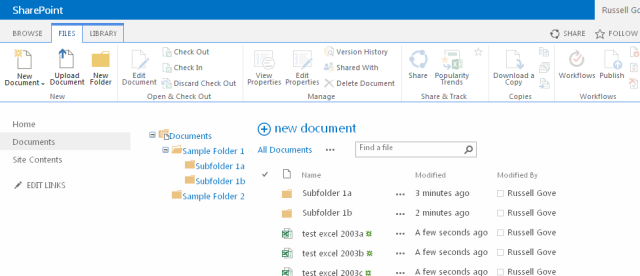#For SharePoint 2007 Compatibility
[void][System.Reflection.Assembly]::LoadWithPartialName("Microsoft.SharePoint")
Function global:Get-SPWebApplication($WebAppURL)
{
return [Microsoft.SharePoint.Administration.SPWebApplication]::Lookup($WebAppURL)
}
#Function to Get the workflow inventory for the entire web application
function Get-WorkflowInventory([string] $WebAppURL)
{
#Get the Web Application URL
$WebApp = Get-SPWebApplication $WebAppURL
#Iterate through each site collection
foreach ($Site in $WebApp.Sites)
{
#Loop through each site
foreach ($Web in $Site.AllWebs)
{
#Loop through each list
foreach ($List in $Web.Lists)
{
# Leave hidden Lists and Libraries
if($List.Hidden -eq $false)
{
foreach ($WorkflowAssociation in $List.WorkflowAssociations)
{
#Leave the "Previous Versions"
if($WorkflowAssociation.Name.Contains("Previous Version") -eq $false)
{
$data = @{
"Site" = $Site.Rootweb.Title
"Web" = $Web.Title
"Web URL" = $Web.Url
"List Name" = $List.Title
"List URL" = $Web.Url+"/"+$List.RootFolder.Url
"Workflow Name" = $WorkflowAssociation.Name
"Running Instances" = $WorkflowAssociation.RunningInstances
}
#Create an object
New-Object PSObject -Property $data
}
}
}
}
$Web.Dispose()
}
$Site.Dispose()
}
}
#call the function
Get-WorkflowInventory "http://domain/" | Export-Csv -NoTypeInformation -Path c:\Reports\WorkflowInventory.csv
write-host "Workflows Inventory report has been generated successfully!"
Write-Host " === === === === === Completed! === === === === === === == "




